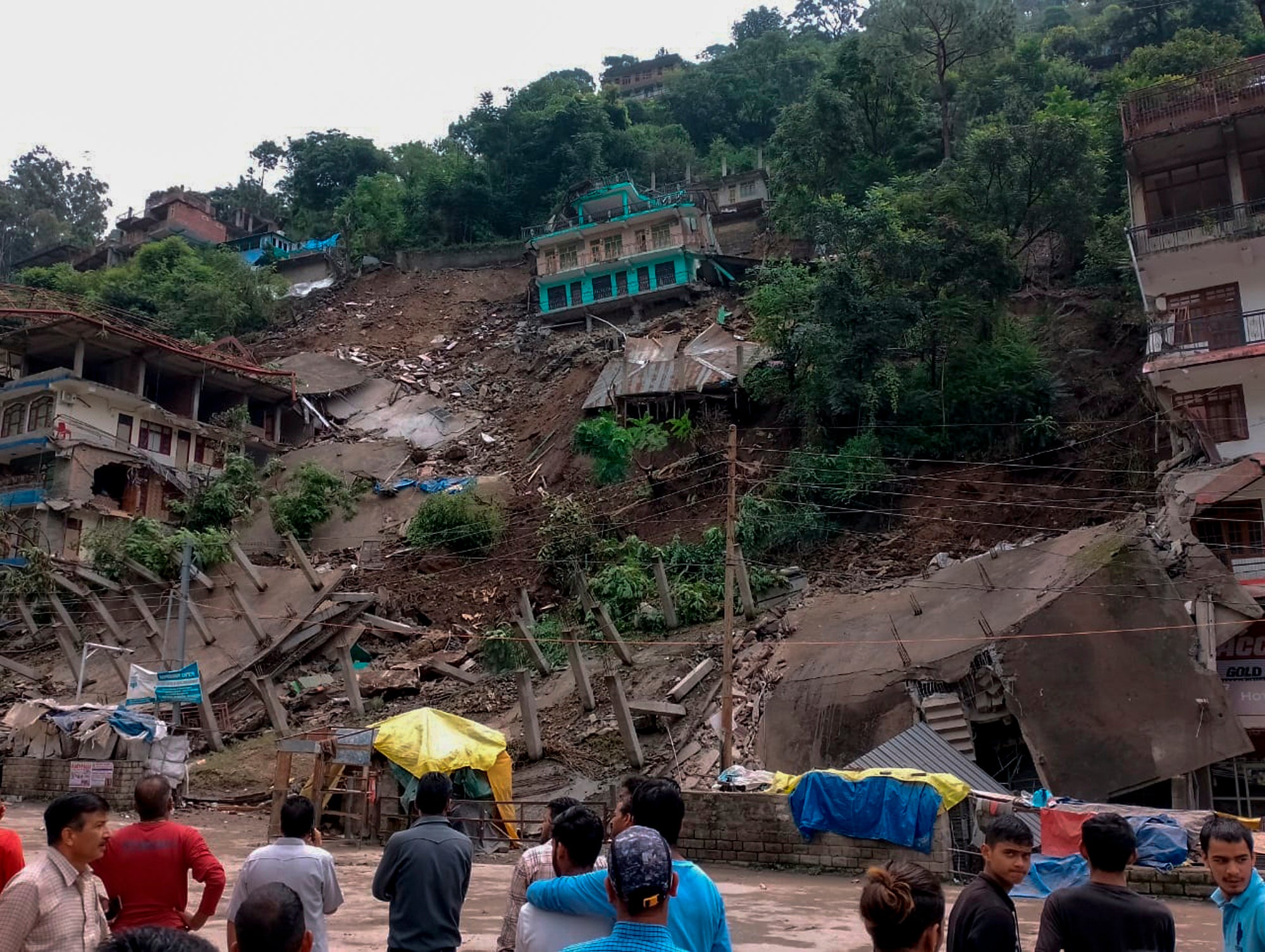Huge landslide crumbles hillside homes within seconds in northern India amid heavy rain
Eight to nine multi-storeyed buildings standing at a slope of the hill crumble one by one as landslide hits
Your support helps us to tell the story
From reproductive rights to climate change to Big Tech, The Independent is on the ground when the story is developing. Whether it's investigating the financials of Elon Musk's pro-Trump PAC or producing our latest documentary, 'The A Word', which shines a light on the American women fighting for reproductive rights, we know how important it is to parse out the facts from the messaging.
At such a critical moment in US history, we need reporters on the ground. Your donation allows us to keep sending journalists to speak to both sides of the story.
The Independent is trusted by Americans across the entire political spectrum. And unlike many other quality news outlets, we choose not to lock Americans out of our reporting and analysis with paywalls. We believe quality journalism should be available to everyone, paid for by those who can afford it.
Your support makes all the difference.Multi-storeyed houses have crumbled in northern India after a landslide struck a hilly region amid widespread rainfall that has wreacked havoc there in the last few weeks.
The crumbling of the buildings was filmed on Thursday morning in a commercial area of Anni, a town in the Kullu district of the Himachal Pradesh state that lies along the Himalayan range.
Initial reports said there was no loss of life because the buildings were evacuated a few days ago due to the increase in risk seen from the heavy rain and thunderstorms in the area.
Emergency response teams such as the National Disaster Response Force (NDRF) and the Himachal Pradesh State Disaster Response Force (SDRF), have been deployed to rescue those feared trapped in the landslide.
Video shared by local media outlets showed eight to nine multi-storeyed buildings standing at a slope of a hill starting to crumble one by one and turning into rubble after a landslide strikes.
“Disturbing visuals emerge from Anni, Kullu, depicting a massive commercial building collapsing amidst a devastating landslide,” Himachal Pradesh chief minister Sukhvinder Singh Sukhu said on X, formerly Twitter.
“It’s noteworthy that the administration had identified the risk and successfully evacuated the building two days ago.”
Himachal Pradesh has been battered by continuous rain, cloudbursts and landslides in the past few weeks which have killed dozens of people.
Rainfall has damaged key highways, including the Kullu-Mandi Highway, leading to hundreds of vehicles being left stranded.
“The road connecting Kullu and Mandi has been damaged. An alternative route via Pandoh has also been damaged. Hence, the movement of traffic is suspended for now,” senior Kullu police officer Sakshi Verma told news agency ANI.
Last week, a landslide in the Shimla city of Himachal killed at least 72 people as bouts of torrential rain continued to trigger landslides and floods, leaving locals scrambling for safety.
Earlier, at least 14 people were killed when a Hindu temple in the state capital collapsed, amid fears many others were still trapped beneath the rubble. A cloudburst in the state’s Solan district killed seven people earlier this month.

The India Meteorological Department (IMD) has issued a red alert for the region and warned of imminent heavy to very heavy rainfall in Himachal Pradesh for the next two days.
While the monsoon season often gets deadly in Himachal, with several factors such as rampant and environmentally unsuitable construction making it highly vulnerable, rainfall this year has been more disastrous.
Assessments by scientists show the rising global average temperatures due to man-made climate crisis is leading to increased atmospheric evaporation and humidity levels, prompting more frequent and sudden extreme rain.
In July, record monsoon showers killed more than 100 people over two weeks in parts of northern India, including Himachal Pradesh, which was one of the worst-hit states.
South Asia receives 70-80 per cent of its annual rainfall in the three months of monsoon starting June. However, record showers this year have left even major cities like Delhi inundated with water, with water from the Yamuna river that cuts across many northern areas in India, reaching even the outskirts of Taj Mahal in July.
Meanwhile, neighbouring Pakistan, which is still reeling from last year’s devastating floods, has also evacuated 100,000 people ahead of flood warnings.



Join our commenting forum
Join thought-provoking conversations, follow other Independent readers and see their replies
Comments